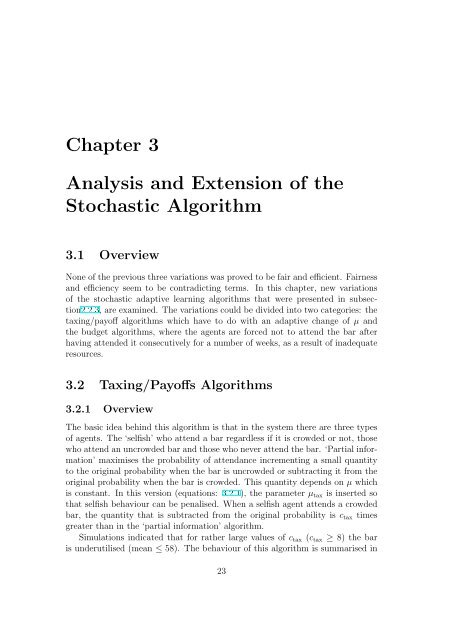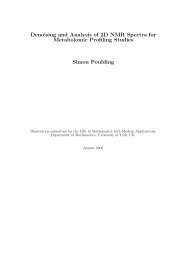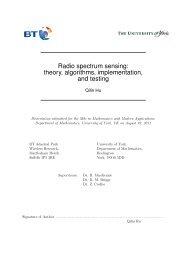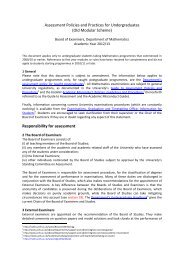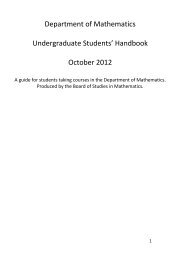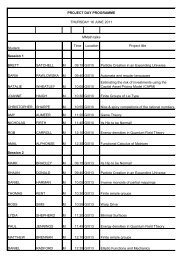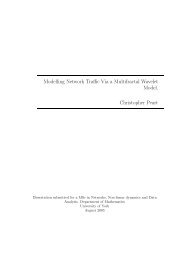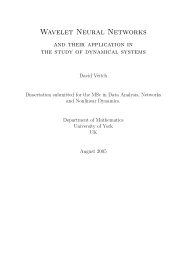The El Farol Bar Problem for next generation systems
The El Farol Bar Problem for next generation systems
The El Farol Bar Problem for next generation systems
Create successful ePaper yourself
Turn your PDF publications into a flip-book with our unique Google optimized e-Paper software.
Chapter 3<br />
Analysis and Extension of the<br />
Stochastic Algorithm<br />
3.1 Overview<br />
None of the previous three variations was proved to be fair and efficient. Fairness<br />
and efficiency seem to be contradicting terms. In this chapter, new variations<br />
of the stochastic adaptive learning algorithms that were presented in subsection2.2.3,<br />
are examined. <strong>The</strong> variations could be divided into two categories: the<br />
taxing/payoff algorithms which have to do with an adaptive change of µ and<br />
the budget algorithms, where the agents are <strong>for</strong>ced not to attend the bar after<br />
having attended it consecutively <strong>for</strong> a number of weeks, as a result of inadequate<br />
resources.<br />
3.2 Taxing/Payoffs Algorithms<br />
3.2.1 Overview<br />
<strong>The</strong> basic idea behind this algorithm is that in the system there are three types<br />
of agents. <strong>The</strong> ‘selfish’ who attend a bar regardless if it is crowded or not, those<br />
who attend an uncrowded bar and those who never attend the bar. ‘Partial in<strong>for</strong>mation’<br />
maximises the probability of attendance incrementing a small quantity<br />
to the original probability when the bar is uncrowded or subtracting it from the<br />
original probability when the bar is crowded. This quantity depends on µ which<br />
is constant. In this version (equations: 3.2.1), the parameter µtax is inserted so<br />
that selfish behaviour can be penalised. When a selfish agent attends a crowded<br />
bar, the quantity that is subtracted from the original probability is ctax times<br />
greater than in the ‘partial in<strong>for</strong>mation’ algorithm.<br />
Simulations indicated that <strong>for</strong> rather large values of ctax (ctax ≥ 8) the bar<br />
is underutilised (mean ≤ 58). <strong>The</strong> behaviour of this algorithm is summarised in<br />
23


